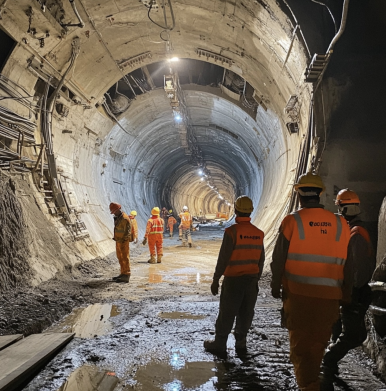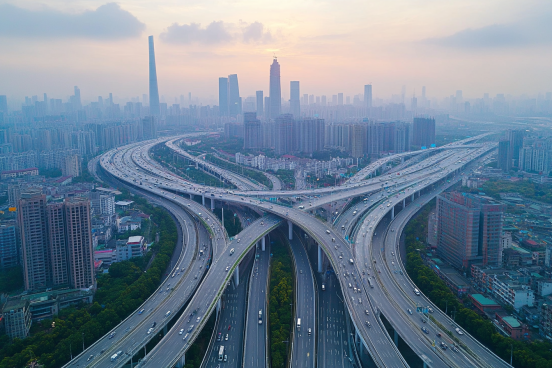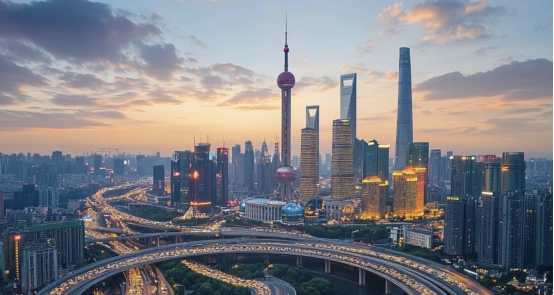A New Artery for Shanghai
Shanghai has added yet another vital transportation route with the opening of the Wuning Road Tunnel, which has quickly become an essential artery for the city’s traffic flow.
After six years of meticulous construction and renovation, the tunnel, often referred to as the “Western Gateway of Shanghai,” is now operational, much to the excitement of the city’s residents. This project marks a significant upgrade to Shanghai’s infrastructure, enhancing connectivity between the central districts and the outer regions.

Strategic Importance: Connecting Key City Routes
The Wuning Road Tunnel plays a critical role in Shanghai’s transportation network, connecting the Middle Ring Road and the Inner Ring Road.
Spanning approximately 3.5 kilometers, the tunnel runs from the Zhenbei Road Interchange in the west to Dongxin Road in the east.
This underground expressway serves as a vital link between Pudong and Puxi, alleviating traffic congestion on surface roads and providing a faster route for commuters traveling to and from the city center.

Engineering Feats: Overcoming Construction Challenges
The construction of the Wuning Road Tunnel was not without its challenges. The tunnel was excavated using the cut-and-cover method, with the tunnel floor lying just 0.5 meters above a 3,500 mm concrete pipeline.
This proximity to existing infrastructure required exceptional precision and control during construction to prevent any damage to surrounding structures. Advanced techniques, such as MJS (Mixed Jet Stabilization) for ground reinforcement and steel lining within the pipeline, were employed to ensure the safety and stability of the project. The successful completion of this complex engineering task sets a new benchmark for urban tunnel construction.

Advanced Lighting Solutions: Ensuring Safety and Comfort
Given the critical role of lighting in tunnel safety, the Wuning Road Tunnel required a highly specialized lighting solution. Sansi LED, leveraging its expertise in LED technology, provided nearly 3,000 sets of tunnel lighting products tailored to the tunnel’s specific needs.
The lighting system incorporates reflective tunnel lights symmetrically placed along the tunnel walls, which reduce glare and enhance visibility for drivers. These lights, based on national “863” key project outcomes, ensure uniform light distribution and support various control modes, contributing to both energy savings and operational efficiency.

Safety Enhancements: Cutting-Edge Heat Dissipation Technology
To further enhance safety, especially in transition areas like entrances and exits, Sansi LED implemented its innovative ceramic heat dissipation technology in the tunnel’s lighting system.
This technology, a core proprietary innovation, addresses the thermal management challenges often faced by conventional LED lights. By reducing heat resistance, the system extends the lifespan of the lighting units and maintains consistent performance, even in the demanding environment of a tunnel.
This approach significantly improves driver comfort by minimizing glare and ensuring natural light transitions, thereby enhancing overall traffic safety.

Wuning Road Tunnel’s Role in Shanghai’s Urban Network
The Wuning Road Tunnel is just one of many tunnels in Shanghai that benefit from advanced lighting solutions. Other notable projects include the North-South Elevated Road, Dalian Road Tunnel, and the Riverside Passage Tunnel.
These projects collectively demonstrate Shanghai’s commitment to improving urban mobility through cutting-edge infrastructure. As of now, Sansi LED has completed over 1,700 tunnel lighting projects nationwide, contributing significantly to the creation of safer and more efficient travel environments across China.

A Landmark in Urban Tunnel Construction
The successful opening of the Wuning Road Tunnel marks a milestone in Shanghai's infrastructure development.
By incorporating advanced construction techniques and state-of-the-art lighting solutions, the tunnel not only enhances the city’s transportation network but also sets a new standard for urban tunnel projects.
This project underscores the importance of integrating innovative technologies into infrastructure development to meet the growing demands of urban mobility.